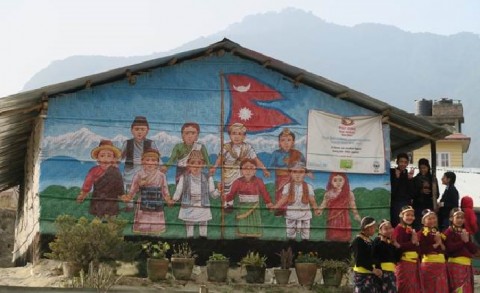Nepalese still waiting for government support after losing their homes in earthquake
In January, nine months after the historically powerful earthquakes, the Nepalese government announced its reconstruction campaign has started.
Over the next few months, the government intends to publish its plans for restoring and reconstructing homes, public buildings and historic monuments.
Hundreds of thousands of Nepalese, who lost their homes in the earthquakes, are still living in temporary sheet metal shelters, unsuited to face the county’s cold winter.
According to Unicef estimates, 200,000 families are living in temporary shelters at altitudes above 1,500 metres where winter conditions will continue at least until the end of February.
The government announced it will attempt to reconstruct private houses within three and public buildings within five years. On the anniversary of the earthquake, 25 April, it will release its five-year reconstruction plan.
“The government should speed up its efforts. People are waiting for the government to deliver the 200,000 rupee (around 1,700 euros) support it promised and new national economic plans to begin construction”, says Johanna Arponen, Finn Church Aid Regional Programme Manager for Asia.
“Building new homes that are more resistant to earthquakes is a priority for the locals. This issue was also brought up during the emergency relief monitoring and evaluation trip of ACT Alliance member organisations in January”, Arponen says.

A local artist has decorated the temporary learning spaces of the Balajun School in Lalitpur. Photo: Johanna Arponen
Finn Church Aid has built 174 temporary learning spaces in the earthquake regions and provided teachers with training to handle the post-earthquake situation.
“Even temporary learning spaces must stand for many years until all 4,000 schools destroyed in the earthquake will have been rebuilt. Painting the bamboo walls or covering them with corrugated iron sheets will help them last longer. For the pupils, the best thing about a temporary school is that it’s safe and the children can play outside in an open space without fear”, Arponen describes.
Text: Ulla Kärki